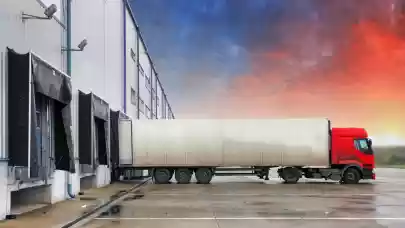
Poland’s warehouse market continues to evolve rapidly, with each major region facing unique challenges and opportunities — from power constraints and rising vacancies to the growing role of green solutions and new manufacturing tenants. In their latest analysis, experts from Avison Young break down the dynamics shaping Poland’s “big five” warehouse markets.
The warehouse market in Warsaw remains strong thanks to a combination of factors: access to a large consumer base, developed transport infrastructure, and rising demand for last-mile logistics. Growth continues both within city limits (Warsaw I), where delivery speed and workforce access are key, and in suburban areas (Warsaw II), which offer more scale and flexibility for production and distribution. Despite economic challenges, tenant activity is stable, and the market remains dynamic. According to Katarzyna Madej, Director, Industrial Agency at Avison Young, Warsaw I maintains the highest rents in Poland, up to €8.50/sqm/month, although developers are becoming more flexible with longer rent-free periods and tailored lease terms. The market is currently experiencing an overbuilt phase, with many large facilities delivered in 2023–2024 still vacant, creating speculative oversupply. There is strong demand for smaller units up to 1,500 sqm, driven by D2C companies in cosmetics, electronics, and apparel. Developers are using creative incentives such as up to 12 months of waived service charges or compensation guarantees. Locations with good access to public transport and cycling routes are increasingly important. The sublease market is growing, driven by 3PL operators seeking short-term leases. Sustainability is also gaining traction, with tenants requesting solar installations and prioritising green solutions.
Upper Silesia differs from logistics-focused regions like Central Poland, as much of the leasing activity comes from manufacturing companies. Facilities are often tailored to operational needs, including cranes and production lines. The region has the highest concentration of manufacturing plants in Poland, particularly in automotive, home appliances, heavy industry, and chemicals, with warehouses often supporting production through just-in-time or made-to-order systems. Despite rising vacancies and increased tenant caution, Upper Silesia remains attractive to investors, thanks to its strategic location and strong infrastructure. Łukasz Ciepły, Director, Industrial Agency at Avison Young, highlights that the region is attracting manufacturers relocating from Czechia and Slovakia. Energy availability has become a key factor, with investors securing power capacity well in advance. Land availability is limited, especially in Katowice and Gliwice, where plots over 5 hectares are rare, making large BTS projects difficult to execute.
In Wrocław, the region has one of the highest concentrations of manufacturing facilities in Poland and is a leader in intermodal terminal development, with major hubs in Kąty Wrocławskie, Legnica, and Brzeg Dolny. These attract companies from the automotive and chemical industries looking to leverage road-rail transport. Wrocław is also a major academic centre, supplying skilled workers for logistics, automation, and IT. Łukasz Ciepły notes that limited grid connection capacity, especially for projects requiring more than 1 MW, is a key bottleneck, with waiting times of 16–20 months. An emerging workaround involves shared capacity solutions, and some providers use surplus energy from nearby facilities. The region is becoming a hub for the battery supply chain, especially for Korean manufacturers connected to LG and SK Innovation. Wrocław is evolving into a core base for Europe’s electromobility sector.
Central Poland is a strategic warehouse region due to its central location and access to major transport routes, making it ideal for nationwide distribution networks. After rapid growth between 2021 and 2023, the market is entering a saturation phase, particularly around Stryków and Rawa Mazowiecka. Vacancy rates are rising, but strong tenant activity and investor interest confirm its solid position. Katarzyna Madej points out the emergence of “warehouse as a service” models, where tenants pay for services like packaging and cross-docking rather than traditional leases. Light manufacturing is also increasing, especially in lighting, HVAC, and electronics, with relocations from Western Europe fuelling demand for ready-to-occupy and BTS projects.
In Poznań, early 2025 saw moderate recovery and more selective developer activity, with the vacancy rate slightly above 8%, reflecting a national trend. Rental rates remained stable, but developers offered more incentives and flexible terms. Dorota Koseska, Director, Industrial Agency at Avison Young, explains that nearshoring is driving new tenants, particularly small and medium-sized manufacturers relocating from Western Europe, attracted by lower labour and land costs and good logistics. Many of these companies are choosing sites outside the A2 corridor for more competitive prices. Developer caution is evident, with 60,000 sqm delivered in early 2025 and 80,000 sqm under construction by March. Despite rising vacancies, demand remains, and incentives are making effective rents more attractive.



